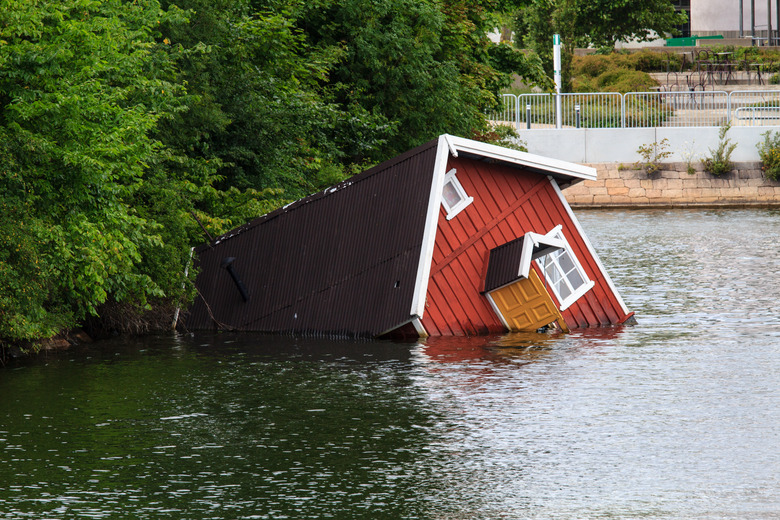What Are The Characteristics Of Floods?
Floods usually occur when there is enough rain in a short enough time to swell a river over its banks or when a storm forces large amounts of water from the ocean inland. Flash floods can occur in dry ecosystems when water gathers in previously dry valleys and washes through them.
River Flooding
River Flooding
Although river flooding can cause great destruction to human habitations that have been built in valleys with rivers, it is a natural and beneficial process within many river ecosystems. It benefits plant and animal life by leaving massive amounts of nutrients in flood plain soils. Humans benefit from this as well when they farm in these rich soils.
Storm Floods
Storm Floods
Ocean storms can cause enormous swells to develop in the open ocean. When these swells meet land, if they are big enough, they simply continue onto the land and swamp whatever is in their way. A recent famous and destructive example of this was Hurricane Katrina, which flooded most of New Orleans in August of 2005. The ocean swells caused by the hurricane breached the city's defenses and covered the city. Floods caused by hurricanes are most threatening in coastal, low-lying areas. Islands such as the Maldives, Cuba and the West Indies are particularly at risk as changing weather patterns cause ever more intense storms and floods.
Flash Floods
Flash Floods
Flash floods are a phenomenon usually found in arid and desert ecosystems. Many of these landscapes have deep gullies and canyons that have been formed by erosion. When a brief and intense rainstorm erupts, the water will naturally seek the lowest point. Water gathers and gains force as it runs into ever larger canyons and can create localized floods that rush through areas that were bone dry only moments before. Needless to say, this can present a hazard to anyone or anything that happens to be in the path of the flood.
Human Causes of Flooding
Human Causes of Flooding
In many parts of the world widespread deforestation has greatly increased the intensity of flooding. This is because forests, particularly tropical rainforests, function as giant sponges that absorb and hold vast amounts of water, releasing the water slowly in streams and rivers. When the trees are removed, the water descends in the form of rain and immediately continues downhill, causing massive flooding in lower elevations. This flooding can then be followed by drought because the water that was always released over a long period by the forest has now passed through in a single flood.
Cite This Article
MLA
Xaxx, Jagg. "What Are The Characteristics Of Floods?" sciencing.com, https://www.sciencing.com/characteristics-floods-8049381/. 13 March 2018.
APA
Xaxx, Jagg. (2018, March 13). What Are The Characteristics Of Floods?. sciencing.com. Retrieved from https://www.sciencing.com/characteristics-floods-8049381/
Chicago
Xaxx, Jagg. What Are The Characteristics Of Floods? last modified March 24, 2022. https://www.sciencing.com/characteristics-floods-8049381/
